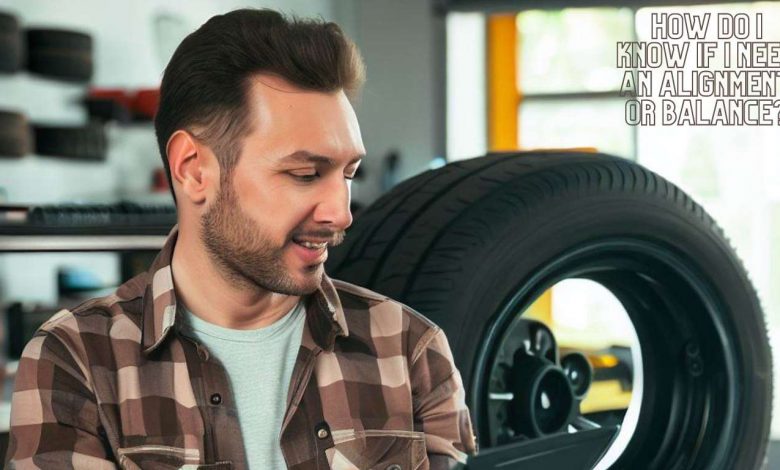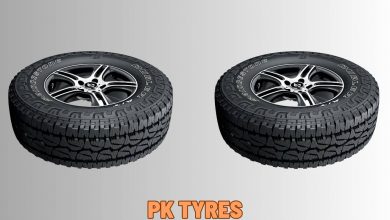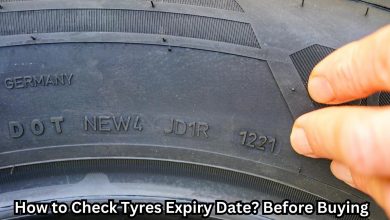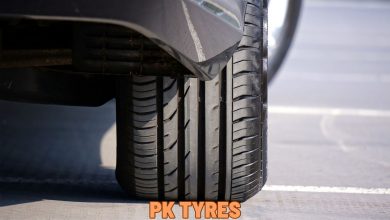
우리 가이드는 귀하의 자동차에 정렬이나 균형이 필요한지 여부를 알려줍니다. 환영! 우리는 자동차를 잘 알고 있습니다. 바퀴를 정렬하고 균형을 유지하는 것이 중요합니다. 이 문서에서는 차량에 얼라이먼트 또는 밸런스가 필요한지 확인하는 방법에 대해 설명합니다. 이 가이드를 마치면 주제를 잘 알게 되고 차량을 올바르고 안전하게 작동할 수 있게 됩니다.
자동차 바퀴가 올바른 각도에 있는지 확인하는 것을 올바른 바퀴 정렬이라고 합니다. 이는 릴이 서로 평행해야 하며 지면에 수직이어야 함을 의미합니다. 타이어가 도로에 고르게 닿도록 해줍니다. 이는 타이어의 수명을 연장하고 운전을 더 쉽고 부드럽게 만들어줍니다. 연석, 움푹 들어간 곳 또는 기타 도로 위험 요소에 부딪히면 휠 정렬이 영향을 받습니다.
정렬이 필요하다는 신호
정렬 불량의 징후를 감지하는 것은 차량 성능을 유지하는 데 중요합니다. 차량에 얼라인먼트가 필요할 수 있음을 나타내는 다음 표시기를 찾으십시오.
- 고르지 않거나 빠른 타이어 마모.
- 차량이 한쪽으로 쏠립니다.
- 스티어링 휠 진동.
- 직진시 핸들이 휘어집니다.
- 삐걱거리는 타이어.
정렬을 확인하는 방법
전문적인 휠 얼라인먼트를 권장하지만 예비 점검을 직접 수행할 수도 있습니다. 평평하고 수평인 표면을 찾아 다음 단계를 따르세요.
- 바퀴가 직선을 향하도록 차량을 주차하십시오.
- 타이어 트레드에 고르지 않은 마모 흔적이 있는지 검사하십시오.
- 핸들을 놓고 차가 한쪽으로 쏠리는지 관찰합니다.
점검 중에 문제가 발견되면 전문가에게 완전한 정렬 평가를 요청하는 것이 가장 좋습니다.
휠 밸런싱의 중요성
휠 밸런싱에는 타이어와 휠 어셈블리의 무게 분포를 균등하게 하는 작업이 포함됩니다. 이는 타이어가 고르게 회전하도록 하고 타이어가 마모되거나 스티어링을 어렵게 만드는 원인이 되는 것을 방지합니다. 새 타이어를 구입하거나 교체할 때, 또는 고르지 못한 타이어를 발견할 때 타이어의 균형을 맞춰야 합니다.
불균형한 바퀴의 지표
바퀴의 균형이 불균형한지 확인하려면 다음 징후를 주의하세요.
- 운전대나 좌석의 진동.
- 고르지 못한 타이어 마모.
- 스티어링 휠 진동.
이러한 증상이 나타나면 신속하게 조치하여 차량에 더 큰 피해가 발생하지 않도록 하세요.
DIY 휠 밸런스 점검
전문적인 휠 밸런싱이 가장 좋지만 집에서 확인할 수 있습니다. 몇 가지 간단한 단계를 따르세요.
- 차량이 평평한 표면에 주차되어 있는지 확인하십시오.
- 잭을 사용하여 각 타이어를 지면에서 들어 올리세요.
- 바퀴를 돌려서 흔들리거나 고르지 않게 회전하는지 확인하세요.
바퀴에 대한 DIY 점검을 수행하는 것은 전문적인 균형을 유지하는 것과 다르다는 점을 기억하십시오. 그러나 가능한 균형 문제를 먼저 파악하는 데 도움이 될 수 있습니다.
전문적인 휠 밸런싱
바퀴의 균형을 완벽하게 맞추는 것이 필수적이므로 자동차 전문가의 도움을 받는 것이 좋습니다. 그들은 정확한 균형과 최적의 성능을 보장하기 위한 전문 장비와 전문 지식을 갖추고 있습니다. 기술자는 균형을 복원하기 위해 불균형을 찾아 수정합니다.
정렬 불량 및 불균형의 일반적인 원인
여러 가지 요인으로 인해 휠 정렬 불량과 불균형이 발생할 수 있습니다. 이러한 원인을 이해하면 예방 조치를 취하는 데 도움이 됩니다.
- 움푹 들어간 곳, 과속 방지턱, 연석 등 도로 위험 요소.
- 고르지 못한 지형에서 운전합니다.
- 시간이 지남에 따라 마모됩니다.
- 서스펜션 시스템 문제.
- 휠이나 타이어의 부적절한 설치.
- 오래된 타이어를 처리하는 가장 좋은 방법은 무엇입니까?
자동차의 균형이 깨지는 이유를 알면 운전 중에 안전을 유지할 수 있습니다. 정기적으로 차량을 점검하고 조심스럽게 운전하면 이런 일이 발생하지 않도록 예방할 수 있습니다.
잘못 정렬되거나 불균형한 바퀴로 운전할 때의 영향
정렬 또는 균형이 맞지 않은 바퀴로 운전하면 차량에 손상을 주어 다음과 같은 문제가 발생할 수 있습니다.
- 고르지 못한 타이어 마모로 인해 조기 타이어 교체가 발생합니다.
- 연료 효율이 감소합니다.
- 서스펜션 구성 요소에 대한 스트레스가 증가했습니다.
- 핸들링이 좋지 않고 안정성이 떨어집니다.
- 특히 비상 기동 중 안전 위험이 있습니다.
- 정기적인 얼라이먼트와 밸런싱을 통해 운전을 부드럽고 안전하게 만들 수 있습니다.
얼마나 자주 정렬이나 균형을 맞춰야 합니까?
정렬 및 균형 조정 빈도는 운전 습관, 도로 상태, 차량 유형 등 다양한 요인에 따라 달라집니다. 자동차 제조업체에서 제안한 대로 6,000마일마다 바퀴를 정렬하는 것이 가장 좋습니다. 바퀴가 고르지 않게 느껴지거나 타이어를 교체하거나 이동할 경우 바퀴의 균형을 맞춰야 합니다.
정렬 및 균형 비용 비교
얼라인먼트 및 밸런싱 서비스 비용은 현재 위치, 보유 차량 종류, 작업 수행자에 따라 달라질 수 있습니다. 다른 제공업체로부터 견적을 받는 것이 현명합니다. 이를 통해 품질 저하 없이 합리적인 가격을 찾을 수 있습니다. 차량의 성능과 수명을 연장하려면 차량의 정렬과 균형에 투자하는 것이 필수적입니다. 이것을 기억!
적절한 정렬과 균형의 이점
적절한 정렬과 균형을 유지하면 다음과 같은 다양한 이점을 얻을 수 있습니다.
- 타이어 수명 연장.
- 연료 효율이 향상되었습니다.
- 향상된 차량 핸들링 및 안정성.
- 서스펜션 손상 위험이 감소합니다.
- 귀하와 승객의 안전이 향상되었습니다.
운전을 개선하고 자동차 투자를 보호하려면 정렬과 균형에 집중하십시오.
결론:
자동차를 제대로 작동하고 오랫동안 안전하게 유지하려면 자동차의 정렬이나 균형을 맞춰야 하는지 아는 것이 중요합니다. 그렇기 때문에 이것을 이해하는 것이 매우 중요합니다. 바퀴를 좋은 상태로 유지하려면 정렬 불량과 불균형의 징후를 알아두십시오. 운전 전 꼭 확인하시고, 필요한 경우 전문가의 도움을 받으세요. 원활하고 효율적이며 안전한 운전 경험을 즐기기 위해서는 정기적인 유지 관리, 주기적인 정렬 및 균형 조정이 중요하다는 점을 기억하십시오. 바퀴를 정렬하고 균형을 맞춰 차량을 관리하세요. 차량을 건강하게 유지하는 데 도움이 됩니다.
자주 묻는 질문:
휠 얼라인먼트와 휠 밸런싱의 차이점은 무엇입니까?
휠 얼라인먼트란 자동차 타이어가 도로에 고르게 닿도록 하는 것을 의미합니다. 휠 밸런싱이란 타이어와 휠의 무게를 균등하게 분산시키는 것을 의미합니다.
바퀴를 직접 정렬할 수 있나요?
이상이 없는지는 스스로 확인할 수도 있지만 정확한 정렬은 전문가에게 문의하는 것이 좋습니다. 전문 기술자는 정확한 정렬 조정을 제공하는 데 필요한 도구와 전문 지식을 갖추고 있습니다.
휠 얼라이먼트나 밸런스를 맞추는 데 시간이 얼마나 걸리나요?
자동차의 정렬이나 균형을 맞추는 데 걸리는 시간은 누가, 어떻게 하느냐에 따라 달라집니다. 휠 얼라인먼트 또는 밸런스 작업은 약 30분에서 1시간 정도 소요됩니다.
휠이 잘못 정렬되거나 불균형한 상태로 운전할 경우 잠재적인 결과는 무엇입니까?
운전 중 바퀴가 잘못 정렬되거나 불균형하면 많은 문제가 발생할 수 있습니다. 타이어가 고르지 않게 마모되어 더 빨리 마모될 수 있습니다. 연비를 저하시키고 차량 관리를 더욱 어렵게 만들 수 있습니다. 많은 사람들에게 스트레스를 줄 수 있습니다.
바퀴 균형을 맞추는 DIY 방법이 있나요?
전문적인 균형 조정을 권장하지만 집에서 기본적인 점검도 수행할 수 있습니다. 그러나 정확하고 안정적인 균형을 위해서는 전문가와 상담하는 것이 가장 좋습니다.
정렬이나 균형을 맞추지 않고 운전할 수 있나요?
부적절한 정렬이나 균형으로 운전하면 문제가 발생할 수 있습니다. 여기에는 고르지 않은 타이어 마모, 차량 제어 어려움, 안전 위험 등이 포함됩니다. 최적의 차량 성능과 안전을 위해서는 정기적인 정렬과 균형을 우선시하는 것이 필수적입니다.




